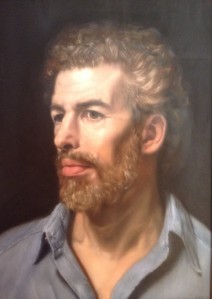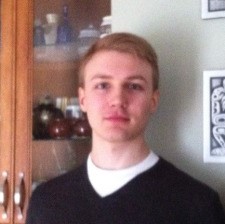In-Sight Publishing
Born to do Math 41 - Metaprimes (Part 7)
Born to do Math 41 - Metaprimes (Part 7)
Scott Douglas Jacobsen & Rick Rosner
April 17, 2017
[Beginning of recorded material]
Rick Rosner: So if you go to the two-slit experiment, and it
doesn’t have to be just two slits or two holes, it could be a Swiss cheese
experiment, where if you shoot a photon at a screen that has a bunch of holes
in it and then you measure that there’s a screen and there’s your target, the
screen is between the gun and the target. The screen has holes. These holes are
the only holes the photons could go through.
Say it is sheet metal
with holes punched through it, a detector behind the metal screen. It turns out
that this setup – if you don’t have individual detectors on each of the holes
to tell you which specific hole the photon passes through, then you will get an
interference pattern on your target wall that shows that each photon more or
less, to some extent, passed through every hole on the way to the target.
Given that photons tend
to travel, roughly—well, I mean, if there’s a hole that’s like 10 miles away,
you won’t get the much of the photon passing through the distant hole. But if
the holes are a few centimeters or millimeters away, and you’re shooting from a
couple ten meters away, and if you’re shooting each bullet of light one at a
time, each goes through a hole. Which says informationally that if you don’t
have any way to determine by setting up your detectors which hole the photon
went through, it will go through all of them.
So that information only
exists to the extent that in the universe it is defined by its relationship
with other things in the universe. To the extent that everything is defined in
the universe, everything is defined by objects’, particles’, mutual
interactions. It is a bit like the number line thing. I suspect there are an
infinite number of twin primes because there is not enough information in the
mutual interaction among the various prime values to stop there from being an
infinity of twin primes.
Similarly, you can’t have
enough interactions to infinitely precisely define every object in the
universe. You can set up an experimental apparatus to really pin down particles
or the aspects of a particle. Its position and velocity. Some things can’t be
really precisely defined. But you can define some particle or system if you
hang enough scientific apparatus on it, on a system, then you can detect a heck
of a lot about it.
But this is at the expense
of the universe. By focusing on some particles, other stuff will be less
defined. You have a choice about what you want to define. Everything in the
universe is roughly defined to the same extent in just normal interactions due
to random action. Like the molecules in a gas are, generally, somebody would do
a statistical analysis, but there is an average definition of a particle in
space. Particles define one another via their interactions.
[End of recorded material]
Authors[1]

Rick Rosner
American Television Writer
RickRosner@Hotmail.Com
Rick Rosner

Scott Douglas Jacobsen
Editor-in-Chief, In-Sight Publishing
Scott.D.Jacobsen@Gmail.Com
In-Sight Publishing
Endnotes
[1] Four format points for the session article:- Bold text following “Scott Douglas Jacobsen:” or “Jacobsen:” is Scott Douglas Jacobsen & non-bold text following “Rick Rosner:” or “Rosner:” is Rick Rosner.
- Session article conducted, transcribed, edited, formatted, and published by Scott.
- Footnotes & in-text citations in the interview & references after the interview.
- This session article has been edited for clarity and readability.
- American Psychological Association. (2010). Citation Guide: APA. Retrieved from http://www.lib.sfu.ca/system/files/28281/APA6CitationGuideSFUv3.pdf.
- Humble, A. (n.d.). Guide to Transcribing. Retrieved from http://www.msvu.ca/site/media/msvu/Transcription%20Guide.pdf.
License
In-Sight Publishing and In-Sight: Independent Interview-Based Journal by Scott Douglas Jacobsen is licensed under a Creative Commons Attribution-NonCommercial-NoDerivatives 4.0 International License.
Based on a work at www.in-sightjournal.com and www.rickrosner.org.
Copyright
© Scott Douglas Jacobsen, Rick Rosner, and In-Sight Publishing and In-Sight: Independent Interview-Based Journal 2012-2017. Unauthorized use and/or duplication of this material without express and written permission from this site’s author and/or owner is strictly prohibited. Excerpts and links may be used, provided that full and clear credit is given to Scott Douglas Jacobsen, Rick Rosner, and In-Sight Publishing and In-Sight: Independent Interview-Based Journal with appropriate and specific direction to the original content.
No comments:
Post a Comment